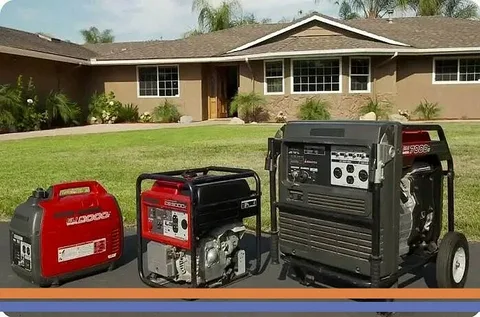Generators are essential backup power sources that provide security during power outages, ensuring your home or business remains operational when the grid fails. However, before you install a generator, several key factors must be considered to ensure you select the right model for your needs and that the installation is both efficient and safe. Whether you’re considering a portable or standby understanding these factors will help you make an informed decision.
Why Installing a Generator is Important
Power outages can occur due to a variety of reasons, including severe weather, equipment failure, or unexpected grid issues. A generator offers peace of mind by ensuring that essential appliances like refrigerators, heaters, and medical equipment continue to run when there is no electricity. However, it’s important to make sure you choose the right type and install it properly to maximize its effectiveness and safety.
Determine Your Power Needs
Before you even begin looking for a generator, it’s essential to assess your power needs. The type of generator you choose will depend on how much power you need during an outage.
Start by making a list of all the appliances and devices that you want to keep powered during an outage. These may include lights, refrigerators, air conditioning units, medical devices, and even your heating system. Add up the wattage requirements of each item to determine the total wattage needed.
For example:
- A refrigerator may require around 600 watts.
- A small air conditioner may need around 2,000 watts.
- Essential lighting could use approximately 200 watts.
Knowing your total wattage requirements will help you select the appropriate generator size. If you opt for a whole-house, you may need one that can handle more substantial power loads, while a portable may suffice for smaller power needs.
Decide Between a Portable and Standby Generator
There are two main types of generators to consider for installation
- Portable: These are smaller, less expensive units that can be moved around easily. They are ideal for providing power to a few key appliances or areas. Portable generators typically require manual setup, such as connecting them to appliances via extension cords. They are great for short-term use, but they do require refueling and may not offer the convenience or power necessary to run an entire home during an extended power outage.
- Standby: A standby is a permanent installation that automatically kicks in during a power outage. It is connected directly to your electrical system and typically runs on natural gas or propane. Standby generators are more expensive but offer more power and convenience. They can run your entire home without interruption and don’t require refueling, as they use the gas supply of your home.
Choose the Right Fuel Type
Generators can run on different types of fuel, including gasoline, propane, and natural gas. The fuel type you choose will depend on availability, cost, and your specific needs.
- Gasoline: Gasoline is widely available, and portable typically use it. However, gasoline has a limited shelf life and may not be as ideal for long-term storage or extended use. It also needs to be refueled periodically, which could be a hassle during long outages.
- Propane: Propane is commonly used for both portable and standby generators. It has a longer shelf life than gasoline, is easier to store, and can be delivered in bulk for larger needs. Propane is also cleaner-burning than gasoline, making it a more environmentally friendly option.
- Natural Gas: Standby often run on natural gas, which is a clean and efficient fuel source. Since natural gas is delivered to your home via pipeline, there’s no need for refueling. The downside is that if your gas supply is disrupted, your generator won’t work.
Evaluate Noise Levels
Noise can be a concern when operating certain equipment, especially if it’s located near living areas. Portable models tend to be noisier, and their sound may disturb your daily activities or neighbors. On the other hand, standby units are typically quieter, as they are installed outside and designed to operate with minimal noise. When selecting equipment, check the decibel rating (dB) to ensure it meets your noise tolerance.
If noise is a significant concern, look for models with noise-dampening features or consider placing the generator in a soundproof enclosure.
Ensure Proper Sizing and Installation
The size of your generator is crucial to its efficiency. Installing a generator that is too small may result in it overworking and failing to provide sufficient power, while an oversized can waste energy and incur unnecessary costs.
For standby hiring a professional installer is highly recommended. They will help ensure that the generator is correctly sized for your needs and that it is installed in a safe, code-compliant manner. This is particularly important if the connected directly to your electrical system.
Portable on the other hand, are typically easier to install but still require proper ventilation to avoid carbon monoxide buildup, especially when used indoors or in enclosed spaces.
Think About Maintenance and Service
Like any mechanical system, generators require regular maintenance to function effectively and last for many years. Whether you choose a portable or standby generator, make sure you understand the maintenance requirements, including oil changes, fuel filter replacement, and general upkeep.
Standby often come with service agreements that include regular maintenance checks and emergency repairs, so you don’t have to worry about performing maintenance yourself. However, even portable generators need occasional servicing, especially if they are used frequently.
Consider the Cost of Installation and Operation
The initial cost of backup power equipment is only one factor to consider. The total cost of ownership includes both installation costs and operational expenses. Standby units are more expensive upfront but are typically more convenient and cost-effective in the long run, as they don’t require refueling. Portable models may be less expensive initially, but you’ll need to factor in fuel costs and potential repairs over time.
Be sure to ask for quotes from professional installers to get a better idea of the costs involved, including installation and any potential site preparation (e.g., running electrical lines or setting up a concrete slab).
Safety Features
Safety should always be a priority when installing a generator. Look for models with built-in safety features such as:
- Automatic shutoff in case of an overload.
- Low oil shutoff to prevent engine damage.
- Carbon monoxide sensors for portable generators to prevent dangerous gas accumulation.
- Grounding options to protect against electrical faults.
Additionally, ensure that your generator is properly ventilated and never operated in an enclosed space like a garage, as this can lead to deadly carbon monoxide poisoning.
Conclusion
Installing backup power equipment is a smart investment that provides security during power outages. However, it’s essential to consider several key factors before making your purchase, including your power needs, equipment type, fuel options, noise levels, and installation requirements. By carefully evaluating these factors and seeking professional advice, you can ensure that you select the best solution for your home or business, providing reliable backup power when you need it most.
FAQs
1. How do I know which size generator to choose?
Determine your power needs by calculating the wattage of essential appliances you want to keep running during an outage. Choose a generator that meets or slightly exceeds your power requirements.
2. How long can a generator run continuously?
The runtime depends on the fuel type and the load it’s powering. Portable typically run for 8 to 10 hours on a full tank of gas, while standby can run indefinitely if they’re connected to a natural gas or propane supply.
3. Can I install a generator myself?
While portable units are easier to install, standby systems should always be installed by a professional to ensure safety, compliance with local codes, and proper integration with your electrical system.
4. How often should I maintain my generator?
Regular maintenance is essential for keeping your backup power equipment in top working condition. It’s recommended to service it every 6 to 12 months, depending on its usage.
5. What safety precautions should I take with my generator?
Always operate your backup power equipment in a well-ventilated area, and never run it indoors or in an enclosed space. Use a transfer switch when connecting it to your home’s electrical system to avoid backreading, which can damage appliances and pose a risk to utility workers.

